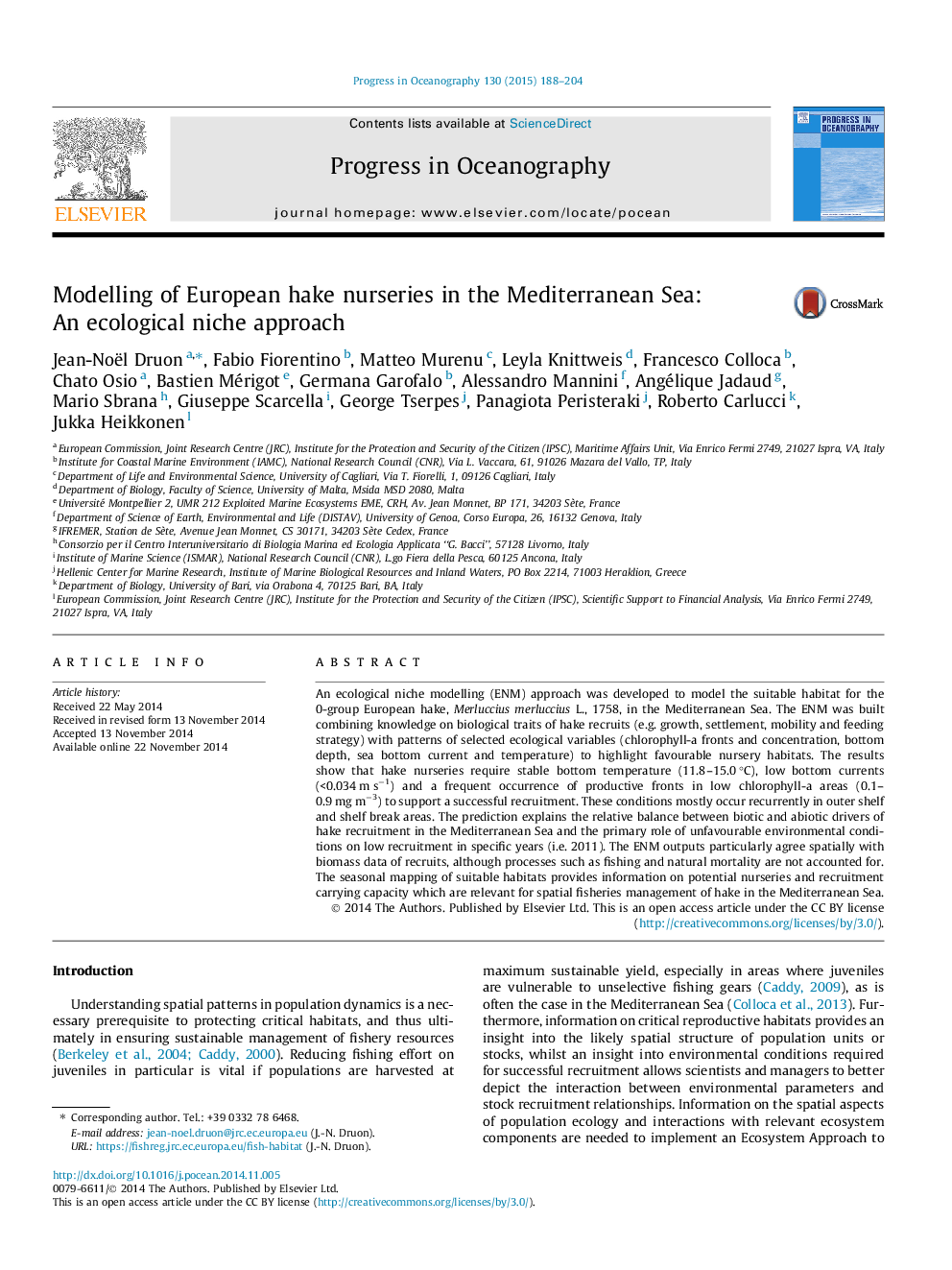| Article ID | Journal | Published Year | Pages | File Type |
|---|---|---|---|---|
| 6388533 | Progress in Oceanography | 2015 | 17 Pages |
Abstract
An ecological niche modelling (ENM) approach was developed to model the suitable habitat for the 0-group European hake, Merluccius merluccius L., 1758, in the Mediterranean Sea. The ENM was built combining knowledge on biological traits of hake recruits (e.g. growth, settlement, mobility and feeding strategy) with patterns of selected ecological variables (chlorophyll-a fronts and concentration, bottom depth, sea bottom current and temperature) to highlight favourable nursery habitats. The results show that hake nurseries require stable bottom temperature (11.8-15.0 °C), low bottom currents (<0.034 m sâ1) and a frequent occurrence of productive fronts in low chlorophyll-a areas (0.1-0.9 mg mâ3) to support a successful recruitment. These conditions mostly occur recurrently in outer shelf and shelf break areas. The prediction explains the relative balance between biotic and abiotic drivers of hake recruitment in the Mediterranean Sea and the primary role of unfavourable environmental conditions on low recruitment in specific years (i.e. 2011). The ENM outputs particularly agree spatially with biomass data of recruits, although processes such as fishing and natural mortality are not accounted for. The seasonal mapping of suitable habitats provides information on potential nurseries and recruitment carrying capacity which are relevant for spatial fisheries management of hake in the Mediterranean Sea.
Related Topics
Physical Sciences and Engineering
Earth and Planetary Sciences
Geology
Authors
Jean-Noël Druon, Fabio Fiorentino, Matteo Murenu, Leyla Knittweis, Francesco Colloca, Chato Osio, Bastien Mérigot, Germana Garofalo, Alessandro Mannini, Angélique Jadaud, Mario Sbrana, Giuseppe Scarcella, George Tserpes, Panagiota Peristeraki,
